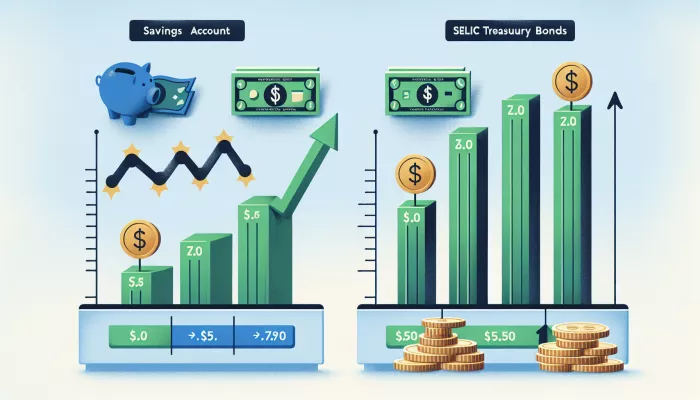
O variable income market It is made up of investments whose return cannot be determined in advance.
Unlike fixed income, your returns may vary depending on the performance of the chosen asset.
This way, it is possible to maximize gains while maintaining control over risks.
This means that investors can either experience high gains or face losses, depending on market variations.

A main advantage of the variable income market is the high return potential compared to fixed income, especially in a long-term context. However, it is essential to be aware of the risks.
Volatility is an intrinsic characteristic of this market, requiring the investor to have knowledge, constant monitoring and a well-defined strategy to mitigate losses.
Understanding how the variable income market works is essential to make more informed decisions and align your investment choices with your financial objectives and risk tolerance.
Diversifying your portfolio is a key strategy for reducing risks and enhancing long-term gains.
With intelligence and strategic planning, it is possible to build a diversified portfolio that aligns with your financial objectives and investor profile.
Below you will find practical tips to diversify your investment wisely.
First of all, It is crucial to understand your risk profile. Conservative, moderate or aggressive investors have different goals and risk tolerances.
This understanding will guide your asset choices in building a balanced and diversified portfolio.
To diversify efficiently, it is essential to mix different asset classes in your portfolio. That includes:
Expanding your investments into international markets can mitigate geographic and political risks by taking advantage of growth opportunities in different economies.
Therefore, international investment funds or ETFs (Exchange-Traded Funds) are practical ways to achieve this diversification.
Rebalancing your portfolio regularly is essential to maintain diversification in line with your goals.
This may mean selling some assets that have appreciated greatly and buying others that are falling, keeping the investment proportion in line with your risk profile.
There are several tools and applications on the market that can help diversify your portfolio.
Therefore, platforms like Morningstar It is Yahoo! Finance offer in-depth analyzes of different assets and investment classes, helping with decision making.
Diversifying your portfolio intelligently is not a task that can be done overnight.
As such, it requires research, planning, and an ongoing review of investments as your financial goals and the market landscape change.
Ultimately, by following these tips, you can build a robust portfolio that is well-equipped to weather market fluctuations while moving toward your long-term goals.
When we explore the universe of investments, especially in the stock market, we come across two main approaches: technical analysis and the fundamental analysis.
Both offer different perspectives and tools for evaluating potential investments, but differ significantly in the approach, methodology and types of indicators used.
A technical analysis focuses on studying asset price movements in the market, using charts and other technical indicators to predict future price trends.
It operates under the premise that all fundamental factors are already reflected in the price, so what really matters is the price movement and the patterns it forms.
Technical analysts examine patterns such as trend lines, chart formations, and various technical indicators such as moving averages, RSI (Relative Strength Index), and MACD (Moving Average Convergence/Divergence).
Already the fundamental analysis seeks to determine the intrinsic value of a company, analyzing a wide variety of economic, financial, qualitative and quantitative factors.
This includes the study of financial reports, balance sheets, profits, growth prospects, quality of management, market position and other macroeconomic indicators.
The objective is to identify undervalued companies by analyzing their fundamentals for long-term investing.
The main difference between the technical analysis and the fundamental analysis resides in time horizon and in focus of each approach.
While technical analysis is mostly used for short-term predictions and making trading decisions, fundamental analysis is preferred by long-term investors focused on accumulating value.
Despite their differences, many investors find it valuable to combine the two approaches to gain a broader understanding of the market and the assets in which they want to invest.
This can help maximize risk-adjusted returns by taking advantage of both short-term market trends and long-term fundamental values.
Understanding the peculiarities of each method and how they complement each other can be fundamental to the investor's success in the dynamic world of the stock market.
Although the variable income market offers great opportunities for wealth growth,
It is important that investors are clear about their objectives, risk profile and, above all, seek continuous financial education.